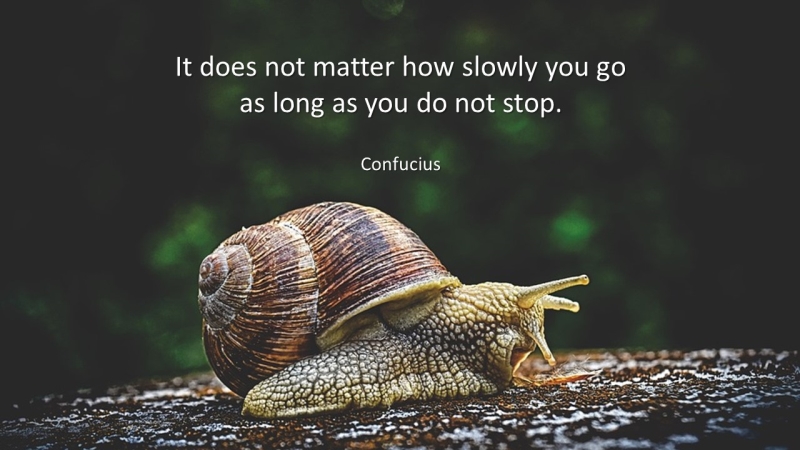SETTING GOALS IS A NECESSARY FIRST STEP TO SUCCEEDING IN ANY AREA OF LIFE. Whether it’s personal growth, career development, or learning a new skill, setting goals helps us to focus our attention and channel our energy towards achieving our desired outcomes.
We constantly receive messages of instant gratification, quick fixes, and shortcuts because we live in a fast-paced environment. However, when it comes to goal-setting, many prioritize speed over persistence. Though we want to reach our goals quickly, we must remember that it takes a marathon, not a sprint.
This article will explore the typical goal-setting mentality of speed over persistence and why persistence is the key to achieving your goals. So take a seat, unwind, and explore the world of goal-setting!

The problem with prioritizing speed
Are you someone who tends to prioritize speed over persistence when it comes to achieving your goals? If so, it’s essential to recognize that this approach can lead to several problems that can ultimately hinder your progress toward success.
How prioritizing speed can lead to burnout
When you focus solely on achieving your goals as quickly as possible, you may work tirelessly day and night without giving yourself a break. Even though we want to get there as soon as possible, we must remember that it’s a marathon, not a sprint, to get there. Burnout can impair your performance and hinder your goals.
The disadvantages of a speed-oriented approach to goal-setting
A speed-oriented approach to goal-setting can also lead to several other disadvantages, including:
- Lack of attention to detail: When you focus solely on speed, you may overlook important details that could impact the quality of your work.
- Increased likelihood of mistakes: Rushing to complete a task can increase the possibility of errors, ultimately setting you back even further.
- Inability to learn from mistakes: Moving too fast may prevent you from learning from your mistakes, which can slow your success.
The negative impact on overall well-being
Lastly, prioritizing speed over persistence can hurt your overall well-being. Stress, anxiety, and burnout can hinder your progress toward your goals. You may neglect relationships, hobbies, and self-care if you push yourself to achieve your goals quickly.
So, to achieve lasting success, it’s essential to recognize that persistence is critical. Slow and steady wins the race! Instead of focusing on speed, set realistic goals, break them down into manageable steps, and stay committed to success.

The benefits of persistence
Now that we’ve discussed the problems with prioritizing speed over persistence, let’s explore the benefits of perseverance and how it can help you achieve long-term success.
How persistence leads to long-term success
Persistence helps you stick to your goals when things get tough. Persistence means not giving up and working hard to achieve your goals. This mindset allows you to progress toward your goals consistently, which ultimately leads to long-term success.
Examples of successful individuals who emphasize persistence over speed
Countless successful individuals emphasize the importance of persistence over speed. Take Thomas Edison, for example. He failed more than 1,000 times before he finally invented the light bulb. Despite numerous setbacks, he remained persistent and kept working towards his goal. His persistence ultimately led to one of the most significant inventions in history.
Another great example is J.K. Rowling. Before she became a well-known author, publishers rejected her writing. She kept trying to become a published author. She persisted, resulting in Harry Potter, which has sold over 500 million copies.
The positive impact on mental and emotional health
Lastly, persistence has a positive impact on your mental and emotional health. Despite setbacks, sticking to your goals builds resilience and self-confidence. This mindset helps you stay motivated and focused on your journey toward success, ultimately leading to a sense of fulfillment and satisfaction.
In conclusion, prioritizing persistence over speed is the key to achieving long-term success. By staying committed to your goals, even when the going gets tough, you build resilience and confidence in yourself and consistent progress toward your desired outcomes. So, embrace the power of persistence, and remember, slow and steady wins the race!

Practical tips for cultivating persistence
Now that we’ve discussed persistence’s benefits let’s explore some practical tips for cultivating this mindset and achieving your goals.
Setting realistic goals and expectations
Be realistic when setting goals. Setting unrealistic expectations can lead to burnout and frustration, derailing your progress. By setting achievable goals and expectations, you set yourself up for success and maintain a sense of motivation and momentum.
Breaking larger goals into smaller, manageable steps
Breaking large goals into smaller, manageable steps builds persistence. Breaking goals into smaller pieces creates a roadmap for consistent progress toward your goals. This approach helps you avoid feeling overwhelmed and makes staying motivated and committed to your goals easier.
Celebrating progress and small victories along the way
Celebrating progress and small victories helps motivate and build persistence. By acknowledging your progress and celebrating your achievements, you reinforce positive habits and behaviors that lead to success. This mindset also lets you stay positive and focused on your journey toward your desired outcomes.
Creating a support system to keep yourself accountable and motivated
Lastly, creating a support system is a powerful way to cultivate persistence. Family, friends, or a coach or mentor can keep you on track and inspire you. Supportive friends help you stay motivated and focused.
In conclusion, cultivating persistence is vital to achieving your goals. Success takes time and effort, but persistence can achieve anything! By setting realistic goals, breaking them down into smaller steps, celebrating progress, and creating a support system, you can build the resilience and confidence you need to achieve your desired outcomes.

Overcoming obstacles and setbacks
Setting goals and working persistently towards them can be a challenging journey. It is natural to encounter obstacles and setbacks along the way. Avoiding these obstacles is the key to success.
Understanding common obstacles and setbacks
Identifying the common obstacles and setbacks that can hinder progress toward your goals. These can include:
- Lack of motivation or burnout
- Fear of failure or self-doubt
- Procrastination or lack of discipline
- Unforeseen life events or circumstances
Strategies for staying persistent
- Stay focused on the bigger picture: Always remember why you established your objective initially and the advantages you will reap upon its accomplishment.
- Reframe your mindset: Instead of seeing obstacles and setbacks as failures, view them as opportunities to learn and grow.
- Break down your goal into smaller steps. When you fail, take the next small step toward your goal.
- Seek support: Contact friends, family, or mentors for support and accountability.
Embrace a growth mindset.
A growth mindset believes one’s abilities and intelligence can be developed through hard work, dedication, and perseverance. Embracing a growth mindset can help you overcome obstacles and setbacks by allowing you to see challenges as opportunities for growth and improvement.
Remember, setbacks and obstacles are a natural part of achieving your goals. You’ll succeed if you persevere.

The Tortoise and the Hare: Lessons on Slow and Steady Success
The classic fable of The Tortoise and the Hare tells the story of a hare who, despite his natural speed, loses a race to a slow but persistent tortoise. The story teaches us that slow and steady progress can lead to success in the long run. It also reminds us not to underestimate the value of persistence, even when facing seemingly unbeatable opponents.
Video Credit: Animaza Studios
The story reminds us that perseverance is more important than talent or speed.

Conclusion
Long-term success requires persistence. Persistence over speed lets you grow, learn, and adapt to your goals. You can stay healthy and positive to avoid burnout.
Avoiding thinking speed is the only way to succeed. Instead, persevere. Celebrate your success and stay focused. If you stick to it, you can accomplish anything.
You can do it! As you go out into the world and pursue your goals, remember that success is not about speed but the journey you take to get there. Embrace persistence and cultivate a growth mindset to help you overcome obstacles, setbacks, and challenges.
CLICK THE IMAGE TO LEARN MORE


